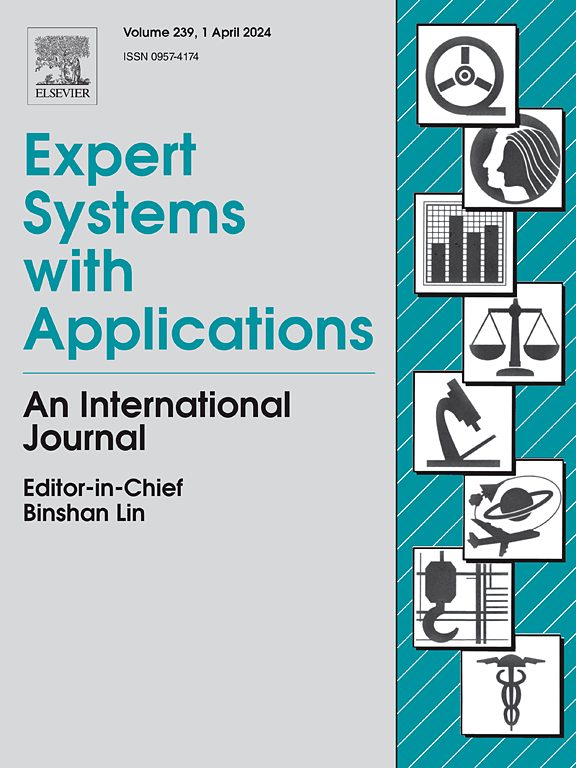IMLL-DETR: An intelligent model for detecting multi-scale litchi leaf diseases and pests in complex agricultural environments
IF 7.5
1区 计算机科学
Q1 COMPUTER SCIENCE, ARTIFICIAL INTELLIGENCE
引用次数: 0
Abstract
Accurately detecting and identifying litchi leaf diseases and pests is vital for achieving effective control. However, litchi leaf disease and pest detection methods have faced several challenges, such as multi-scale targets, high-density targets, and interference from weather, which increase the difficulty of detection for general network models. Therefore, this study proposes a highly accurate and intensely robust target detection model based on an improved Real-Time DEtection TRansformer (RT-DETR) called the Intelligent Multi-scale Litchi Leaf diseases and pests DETR (IMLL-DETR). To mitigate the impacts of these uncertainties in complex agricultural environments, this study proposes a Multi-scale Dynamic convolutional Gated Attention module (MDGA). The MDGA module enhances the focus on local multi-scale targets by extracting features from targets at different scales via multi-branch depth-wise strip convolutions. It also introduces Dynamic convolution (DynamicConv) to obtain the global key contextual information to prevent the model from being dominated by local features, reduce the impacts of complex backgrounds and the relationships between targets, and then dynamically adjust the local multi-scale information and global contextual key information through a gating mechanism to achieve an ideal balance between them, thereby effectively improving the accuracy and robustness of the litchi disease and pest detection process. Additionally, to overcome the loss of information about small targets and detailed features when litchi leaf disease and pest features are propagated over long distances in the network, the IMLL-DETR introduces the P2 detection head. Finally, to improve the accuracy of small target localization and the distinctions between closely spaced targets, the NWD_Focaler-GIoU localization loss function is restructured. To evaluate the performance of the IMLL-DETR in complex agricultural environments, image data concerning five common litchi leaf diseases and pests were collected from natural agriculture environments under three weather conditions, and a multi-scale target dataset named LEADA was constructed. The experimental results showed that on the LEADA, the AP50, AP50:95, and AR50:95 of the IMLL-DETR reached 84.4 %, 49.1 %, and 56.9 %, respectively, which were 3.8 %, 2.7 %, and 2.0 % higher than those of the baseline model. For the large, medium, and small targets contained in the LEADA dataset, the AP50:95 values of the IMLL-DETR reached 82.1 %, 67.1 %, and 41.1 %, respectively, marking improvements of 8.3 %, 2.6 %, and 3.2 % over the baseline model. In addition, the AP50 values produced by the IMLL-DETR for scenarios with sunlight interference, rain interference, and high-density targets improved by 5.9 %, 3.3 %, and 4.9 %, respectively. These results demonstrate that the IMLL-DETR has high accuracy and strong robustness. Finally, the experimental results obtained on other datasets and other models validated the superiority of the IMLL-DETR. This study is expected to provide adequate technical support for controlling and managing litchi leaf diseases and pests.
复杂农业环境下多尺度荔枝叶病虫害智能检测模型
准确检测和鉴定荔枝叶病虫害是实现有效防治的关键。然而,荔枝叶病虫害检测方法面临多尺度目标、高密度目标和天气干扰等挑战,增加了一般网络模型的检测难度。因此,本研究提出了一种基于改进实时检测变压器(RT-DETR)的高精度、强鲁棒性目标检测模型——智能多尺度荔枝叶病虫害DETR (IMLL-DETR)。为了减轻这些不确定性在复杂农业环境中的影响,本研究提出了一个多尺度动态卷积门控注意模块(MDGA)。MDGA模块通过多分支深度条带卷积提取不同尺度目标的特征,增强了对局部多尺度目标的关注。引入动态卷积(DynamicConv)获取全局关键上下文信息,防止模型被局部特征支配,减少复杂背景和目标间关系的影响,通过门控机制对局部多尺度信息和全局关键上下文信息进行动态调整,达到理想的平衡。从而有效地提高了荔枝病虫害检测过程的准确性和鲁棒性。此外,为了克服荔枝叶病虫害特征在网络中长距离传播时小目标和详细特征信息的丢失,iml - detr引入了P2检测头。最后,为了提高小目标定位的精度和近距离目标之间的区别,重构了NWD_Focaler-GIoU定位损失函数。为了评估IMLL-DETR在复杂农业环境中的性能,在3种气象条件下采集了5种常见的荔枝叶病虫害图像数据,构建了多尺度目标数据集LEADA。实验结果表明,在LEADA上,IMLL-DETR的AP50、AP50:95和AR50:95分别达到84.4%、49.1%和56.9%,比基线模型分别提高3.8%、2.7%和2.0%。对于LEADA数据集中包含的大、中、小目标,IMLL-DETR的AP50:95值分别达到82.1%、67.1%和41.1%,比基线模型提高了8.3%、2.6%和3.2%。此外,在有阳光干扰、雨水干扰和高密度目标的情况下,IMLL-DETR的AP50值分别提高了5.9%、3.3%和4.9%。结果表明,IMLL-DETR具有较高的精度和较强的鲁棒性。最后,在其他数据集和其他模型上的实验结果验证了IMLL-DETR的优越性。本研究有望为荔枝叶病虫害的防治提供充分的技术支持。
本文章由计算机程序翻译,如有差异,请以英文原文为准。
求助全文
约1分钟内获得全文
求助全文
来源期刊

Expert Systems with Applications
工程技术-工程:电子与电气
CiteScore
13.80
自引率
10.60%
发文量
2045
审稿时长
8.7 months
期刊介绍:
Expert Systems With Applications is an international journal dedicated to the exchange of information on expert and intelligent systems used globally in industry, government, and universities. The journal emphasizes original papers covering the design, development, testing, implementation, and management of these systems, offering practical guidelines. It spans various sectors such as finance, engineering, marketing, law, project management, information management, medicine, and more. The journal also welcomes papers on multi-agent systems, knowledge management, neural networks, knowledge discovery, data mining, and other related areas, excluding applications to military/defense systems.
 求助内容:
求助内容: 应助结果提醒方式:
应助结果提醒方式:


